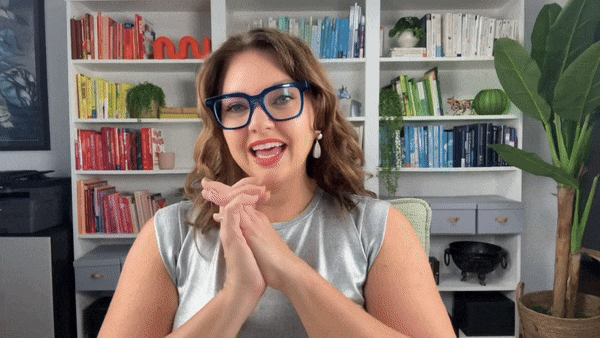
You don’t need to improve. You need to stop getting in your own way.
Let’s say you get an impulse to do something kind.
Send a message.
Buy a coffee.
Check in with someone.
Offer help, even though they didn’t ask for it.
You pause.
And then… the mental noise starts:
“Is now the right time?”
“Will it come off weird?”
“I don’t want to overstep.”
Before you know it, the moment’s passed—and with it, that tiny opportunity to act in alignment with your values.
Let’s be clear: this isn’t because you’re selfish or flaky.
It’s because your brain is doing what it’s designed to do:
protect you from discomfort, not guide you toward growth.
You don’t need to “become better”
We’ve absorbed the idea that generosity should be earned. That before we give, we must first be more—more mindful, more patient, more evolved.
But this isn’t a character flaw. It’s a mental habit.
“You don’t need to transform into someone who feels more love for humanity. Just stop blocking the love that’s already there.”
– Oliver Burkeman (paraphrasing Chögyam Trungpa)
You already are generous. You’re just stuck in a loop of hesitation.
Your default isn’t cruelty. It’s caution.
But that caution, unchecked, becomes paralysis.
What’s actually happening in your brain
Let’s zoom out for a second.
When a generous impulse arises, you’re accessing your brain’s prosocial network—including areas like the medial prefrontal cortex and the temporoparietal junction (TPJ), which help you imagine someone else’s perspective.
That’s healthy human wiring.
But then your default mode network (DMN) kicks in. This is the brain’s internal monologue, often responsible for self-referential thinking—like What will they think? Will this be awkward?
It’s not malicious. It’s just noisy.
Now layer in the amygdala—your emotional smoke detector. It lights up when something feels risky (even if it’s just vulnerability). Research shows that uncertainty and exposure activate this threat response. So if kindness feels a bit exposed, your brain might treat it like danger.
This isn’t selfishness.
It’s neurobiology doing what it does best: avoid perceived threat.
The problem? In doing so, your brain blocks the exact thing that builds connection, purpose, and peace.
The psychology behind the pause
Let’s translate that science into real-world terms.
- Overthinking = Cognitive Load
When you’re already tired, decision-fatigued, or emotionally taxed, you’re more likely to default to inaction. It’s not a character flaw. It’s an executive function issue. - Perfectionism = Delayed Generosity
Studies by Dr. Brené Brown and others show that perfectionism is strongly linked to shame—not excellence. When you hold off until something is “done right,” you often don’t do it at all. - Rumination = Compassion Paralysis
Harvard research shows that people who ruminate (replay mistakes or overanalyse choices) are less likely to take prosocial action—even when they care deeply. Thinking too much actually reduces our likelihood of showing up for others.
The paradox of generosity
We think being kind will drain us. That giving too much will wear us out.
But studies in social psychology consistently show the opposite.
A 2016 study in Emotion found that performing even small acts of kindness leads to a measurable increase in well-being and reduces the effects of daily stress.
Another study from the University of Zurich showed that generosity lights up reward centres in the brain—regardless of how much is given.
It doesn’t have to be perfect.
It doesn’t have to be big.
It just has to happen.
PART TWO: How to Get Out of Your Own Way
This isn’t about pushing yourself to “do more.”
It’s about clearing the interference between the impulse and the action.
Here’s how.
- Act Fast, Think Later
Tool: Behavioral Activation
This is a gold standard CBT tool. The idea is simple: action leads to alignment. You don’t wait until you feel like it—you move, and the feeling follows.
Next time you have the urge to do something kind—act within 5 seconds. Don’t write it down. Don’t optimise it. Just do it.
- Name the Noise
Tool: Cognitive Defusion
From ACT (Acceptance and Commitment Therapy), this technique helps you notice a thought without fusing with it.
So instead of “this will be awkward,” try:
“I’m having the thought this might be awkward.”
That’s it. That little shift creates space. And space = freedom.
- Stop Making It a Test
Tool: Reframing Perfectionism
You don’t need to get it right. You just need to let it be real.
Self-compassion research shows that people who are kind to themselves are more likely to be generous to others. Why? Because they’re not operating from shame.
So instead of asking:
“Is this enough?”
Try:
“Is this aligned with who I want to be?”
- Interrupt the Identity Spiral
Tool: Identity Reinforcement Loop
Every time you act on a generous impulse, your brain records it as evidence:
I’m someone who shows up.
Neuroscience backs this. Repeated behaviours strengthen neural pathways. Over time, small choices—sending the text, making the call, showing up—begin to reshape how you see yourself.
So yes, you can train yourself to move faster on kindness.
But it doesn’t happen by willing yourself into being better.
It happens in moments.
Trust the Impulse, Train the Identity
When the generous impulse shows up, you don’t need to amplify it.
You just need to act on it—before your mind edits it out.
This isn’t about pushing yourself.
It’s about noticing the moment, and not blocking it.
And when you do that regularly, something powerful happens:
You start to believe, “This is just who I am.”
Psychologists call this identity reinforcement.
Therapists call it behavioural activation.
And in Japan, it’s known as Kaizen—the practice of steady, daily micro-improvement.
“Every action you take is a vote for the type of person you wish to become.” – James Clear
In Fast Psychology, I would say it like this:
The faster you act on your generous instincts, the less permission fear has to interrupt you. The more often you move, the less friction you feel. And slowly—almost quietly—you become someone who shows up.
It’s not about being better.
It’s about being braver—for two seconds at a time.
You don’t need a grand plan. You need a micro-moment.
Catch it. Move with it. That’s Kaizen.



 to your inbox. (Unsub anytime in a click.) You also agree to my
to your inbox. (Unsub anytime in a click.) You also agree to my 